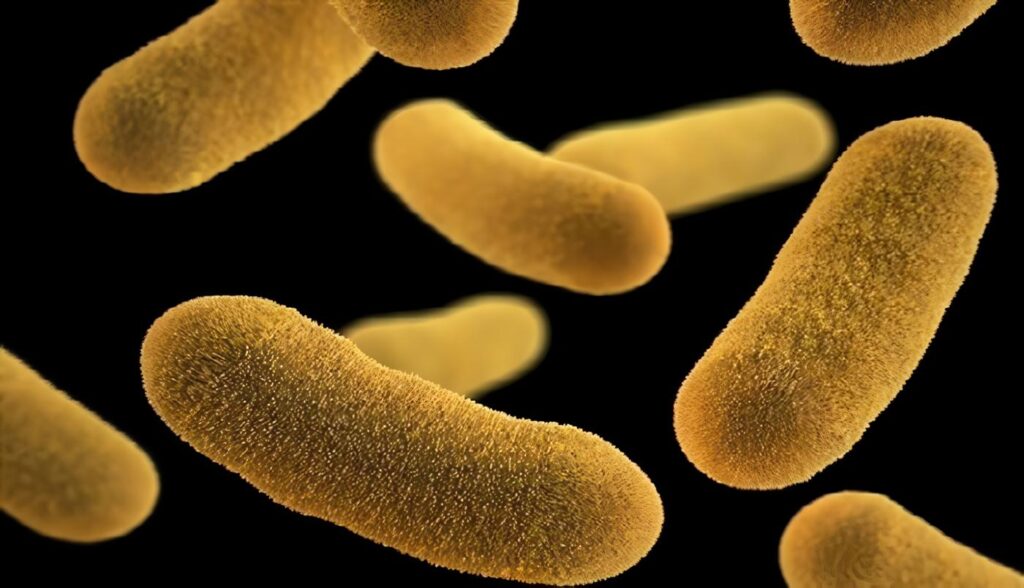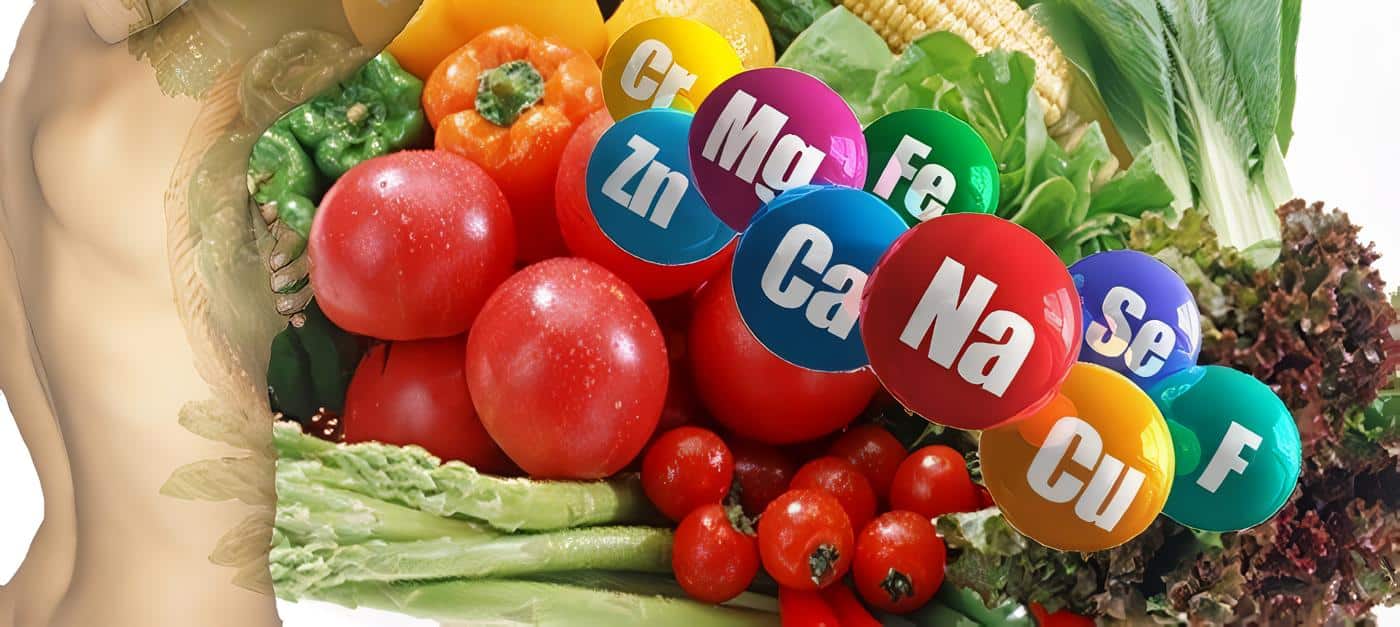Un aspecto de especial interés es la dinámica in vivo de cada uno de los dipéptidos, puesto que el modo o el sitio de la hidrólisis determinan la capacidad y la eficiencia de su utilización.
Algunos estudios recientes en los cuales se utilizaron nuevos ensayos en vitro para medir la actividad de la hidrolasa contra los dipéptidos con contenido de glutamina, tirosina o cistina en fracciones celulares del plasma, la mucosa y el músculo demostraron que los dipéptidos son sustratos para las peptidasas libres (plasma y citos1) y también para las peptidasas unidas a la membrana celular.(84-87)
La tasa de la hidrólisis plasmática depende de la composición de aminoácidos de los péptidos y es necesario considerar tanto el aminoácido del terminal N como el del terminal C. La capacidad de la hidrolasa plasmática para la alanil-glutamina es de unos 20 a 40 nmol/mL min.
Esta alta capacidad podría explicar en parte la vida media plasmática extremadamente corta que se observó in vivo en estudios anteriores.(49,51) La afinidad hacia la alanil- glutamina de las peptidasas unidas a la membrana, en la membrana basolateral, la membrana del borde en cepillo y el sarcolema muscular es muy semejante a la observada en el plasma y el citosol.
La eliminación de la alanil-glutamina administrada por vía intravenosa es el resultado combinado de la hidrólisis catalizada por las peptidasas libres en el plasma y las peptidasas unidas a la membrana. Estas últimas demostraron una mayor afinidad y capacidad contra la alanil-glutamina que contra la glicil-glutamina, lo cual explica el periodo prolongado de eliminación in vivo.
Todas estas observaciones indican que la estructura de los péptidos influye sobre la vida media de eliminación y también sobre el sitio de la hidrólisis.
Es necesario definir la naturaleza y la especificación de los péptidos o grupos de péptidos más favorables.
Aunque con la eliminación rápida de los péptidos administrados por vía intravenosa se podría reducir el riesgo de unos efectos secundarios farmacológicos o fisiológicos indeseables,(88) aún es demasiado pronto para hacer recomendaciones explícitas.
Es muy probable que la utilización que un determinado tejido pueda hacer del péptido varíe de acuerdo con la estructura y los efectos biológicos de este último.
No creemos que sea útil especular sobre la correlación entre la estructura del péptido y su afinidad para la hidrólisis.( 7,89)
Para evaluar debidamente la influencia de la estructura sobre el comportamiento en la hidrólisis sería necesario considerar los efectos de unas 400 variaciones estructurales posibles.
Considerando la intención de mejorar la nutrición clínica mediante el empleo de dipéptidos intravenosos, las diferencias marginales con respecto a las vidas medias no tienen mayor importancia.
Mucho más importante es demostrar la utilización selectiva o específica de un determinado dipéptido o de una combinación de aminoácido/dipéptido por parte de los distintos órganos.
El futuro de los péptidos en la nutrición parenteral
Recientemente se ha venido estudiando la posibilidad de utilizar péptidos de cadena corta como sustratos adicionales o alternos para los aminoácidos dentro del contexto de la nutrición parenteral.
La baja osmolaridad de las soluciones parenterales a base de péptidos permite satisfacer las necesidades de nitrógeno con un volumen bajo en los casos en que es conveniente restringir los líquidos.(7)
Agregar dipéptidos que contengan glutamina, tirosina y cistina es un paso importante hacia la solución del problema de cómo formular y preparar las nuevas soluciones de aminoácidos adaptadas a las necesidades del paciente.(90)
El objetivo de este artículo era analizar el potencial nutricional de los péptidos de cadena corta y hacer énfasis en la necesidad de contar con péptidos de glutamina, especialmente en ciertas condiciones catabólicas.
Es demasiado pronto para hacer una recomendación con respecto a la naturaleza y especificación del péptido o los grupos de péptidos más favorables.
Es muy probable que la capacidad de los tejidos para utilizar un péptido dirigido específicamente a ellos varíe de acuerdo con la estructura y los efectos biológicos del péptido en cuestión.(45,52,84,91,92) Hay determinadas enfermedades que pueden generar deficiencias,(15,47) antagonismos o desequilibrios de ciertos aminoácidos en los diversos tejidos orgánicos.
En esas condiciones quizás sea necesario administrar de manera selectiva uno o más péptidos específicos requeridos únicamente en cada situación particular para dar soporte a los tejidos donde se presente escasez de los mismos.
Referencias bibliográficas
- 1. Cuthbertson DP. Parenteral and enteral nutrition: whiter the future. Clin Nutr. 1982; 1: 5-23.
- 2. Abelson J. Revolution in biology. Science. 1980; 209: 1317-20.
- 3. Wilmore DW. The practice of clinical nutrition: how to prepare for the future. JPEN. 1989; 13: 337-43.
- 4. Fürst P. Gritería underlying the formulation of amino acid regimens: established and new approaches. En Kleinberger G, Deutsch E, eds. New aspects of clinical nutrition. Basel: Karger 1983. p. 361-76.
- 5. Brennan MF, Cerra F, Daly JM, et al. Report of a research workshop: branched-chain amino acids in stress and injury. JPEN 1986; 10: 446-52.
- 6. Fürst P. Peptides in clinical nutrition. Clin Nutr. 1985; 4(suppl): 105-5.
- 7. Adlbi SA. Experimental basis for use of peptides as substrates for parenteral nutrition: a review. Metabolism. 1987; 36: 1001-11.
- 8. ADIBI SA, Fekl W, Fürst P, et al. Dipeptides as new substrates in clinical nutrition therapy. Basel: Karger, 1987.
- 9. Fürst P. Peptides in clinical nutrition. Clin Nutr. 1991; 10(suppl 1): 19-24.
10. Silk DBA. Intestinal absorption of nutrients. En Fischer JE, Ed. Surgical nutrition. Boston: Little, Brown and Company, 1983. p. 19-64. - 11. Matthews DM. Introduction En: Adibi SA, Fekl W, Fürst P,
- et al, eds. Dipeptides as new substrates in nutrltlon therapy. Basel: Karger, 1987. p. 1-5.
- 12. 12. Laidlaw SA, Kopple JD. Newer concepts of the indispensable amino acids. Am J Clin Nutr. 1987; 46:593-605.
- 13. Gaull G, Sturman JA, Rähä NCR. Development of mammalian sulfur metabolism: absence of cystothionase in human fetal tissues. Pediatr Res. 1972; 6: 538-47.
- 14. Chawla RK, Lewis FW, Kutner M, et al. Plasma cysteine, cystine, and glutathione in cirrhosis. Gastroenterology. 1984; 87: 770-6.
- 15. Fürst P. Intracellular muscle free amino acids – their measurement and function. Proc Nutr Soc. 1983, 42: 451-62.
- 16. Souba WW. Glutamine: a key substrate for the splanchnic bed. Annu Rev Nutr. 1991; 11: 285-308.
- 17. Souba WW, Klimberg VS, Plamley DA, et al. The role of glutamine in maintaining a healthy gut and supporting the metabolic response injury and infection. J Surg Re. 1990; 48: 383-91.
- 18. Alvestrand A, Ahlberg M, Bergstrom J, et al. Clinical results of long term treatment with a low protein diet and a new amino acid preparation in patients with chronic uremia. Clin Nephrol. 1983; 19: 67-73.
- 19. Snyderman SE. Recommendations for parenteral amino acid requirements. In: Winters RW. Hasselmeyer EG, eds. Intravenous nutrition in the high risk infant. New York: John Wiley, 1975. p. 422-3.
- 20. Rudman D, Kutner M, Ansley J, et al. Hypotyrosinemia, hypoystinemia and failure to retain nitrogen during total parenteral nutrition of cirrhotic patients. Gastroenterology. 1981; 81: 1025-35.
- 21. Bohler S, Neuhauser-Berthold M, Wagner K, et al. Cystein in der parenteralen Ernahrung: Vergleichende Studien über N-Acetylcystein und N,N: Diacetylcystin am Modell der Ratte. Infusionsther Klin Ern 1988; 15: 89-92.
- 22. Meister A. Metabolism of glutamine. Physiol Rev 1956; 36: 103-27.
- 23. Stchle P, Kühne B, Kubin W, et al. Synthesis and characterization of tyrosine – and glutamine-containing peptides. J Appl Biochem. 1982; 4: 280-6.
- 24. Stehle P, Fürst P. Isotachophoretic control of peptide synthesis and purification. A novel approach using ultraviolet detection at 206 nm. J Chromatogr. 1985; 346: 271-9.
- 25. Stehle P. Budarfegoroehto Burertstellung von kurzkutlgen Peptiden – Eine Voraussetzung tur deren Einsatz in der künstlichen Ernährung. Infusionsther Klin Ern. 1988; 15: 27-32.
- 26. Stehle P, Pfaender P, Fürst P. Isotachophoretic analysis of asynthetic dipeptide L-alanyl-L-glutamine. Evidence for stability during neat sterilization. J Chromatogr. 1984; 294:507-12.
- 27. Jakubke H-D, Kuhl P, Könnecke A. Grundprinzipien der proteasekatalysierten Knüpfung der Peptidbindung. Angew Chem. 1985; 97: 79-87.
- 28. Groeger U, Stehle P, Fürst P, et al. Papain-catalyzed synthesis of dipeptides. A novel approach using free amino acids as nucleophiles. Enzyme Microb Technol. 1990; 12: 56-60.
- 29. Stehle P, Bahsitta H-P, Monter B, et al. Papain-catalyzed synthesis of dipeptides. A novel approach using free amino acids as nucleophiles. Enzyme Microb Technol. 1990; 12: 56-60.
- 30. Monter B, Herzog B, Stehle P, et al. Kinetically controlled synthesis of dipeptides using ficin as biocatalyst. Biotechnol Appl Biochem. 1991; 14: 183-191.
- 31. Daabees TT, Stegink LD, L-Alanyl-L-tyrosine as a tyrosine source during intravenous nutrition of the rat. J Nutr. 1978; 108: 1104-7.
- 32. Krzysik BA, Adibi SA. Comparison of metabolism of glycine injected intravenously in free and dipeptide forms. Metabolism. 1979; 28: 1217-7.
- 33. Adibi SA, Morse EL. Enrichment of glycine pool in plasma and tissues by glycine, di-, tri-, and tetraglycine Am J Physiol. 1982; 243: E113-7.
- 34. Amberger I, Fürst P, Godel H, et al. The potential parenteral application of the peptide L-alanyl-L-glutamine as a nitrogen source in severe catabolic states. Hoppe-Seyler’s Z Physiol Cherrj. 1983; 364: 1253-4.
- 35. Stehle P, Ratz I, Ffst P. In vivo utilization of intravenously supplied L-alanyl-L-glutamine in various tissues of the rat. Nutrition. 1989; 5: 111-5.
- 36. Stehle P, Ratz I, Fürst P. Whole-body autoradiography in the rat after intravenous bolus injection of L-alanyl-L-[U-11 C] glutamine. Ann Nutr Metab. 1991; 35: 213-20.
- 37. Stehle P, Albers S, Pollack L, et al. In vivo utilization of cystinecontaining synthetic short chain peptides after intravenous bolus injection ¡n the rat. J Nutr. 1988; 118: 1470-4.
- 38. Hilton M, Hilton F, Montgomery W, et al. Use of the stable peptide, gamma-L-glutamul-L-tyrosine as an intravenous source of tyrosine in mice. Metabolism. 1991; 40: 634-8.
- 39. Neuhauser M, Wandira JA, Göttmann U, et al. Utilization of N-acetyl L-tyrosine and glycyl-L-tyrosine during long-term parenteral nutrition in the growing rat. Am J Clin Nutr. 1985; 42: 585-96.
- 40. Albers S, Abele R, Amberger I, et al. Komplette parenterale Ernährung mit un ohne einem synthetischen Dipeptid (L- alanyl-L-glutamin) bei Ratten mit Verbrennungen. Akt Ernaechr. 1984; 9: 147-9.
- 41. Luft G, Stehle P, Fürst P. In vivo utilization of cystine- containing short chain peptides during TPN in rats [Abstract]. Clin Nutr. 1991; 10(suppl 2): 11.
- 42. Karner J, Roth E, Ollenschlager G, et al Glutamine-containing dipeptides as infusion substrates in the septic state. Surgery. 1989; 106: 893-900.
- 43. Babst R, Höring H, Stehle P, et al. Effects of glutamine supplementation on tissue glutamine concentrations and tissue morphology in long term TPN of growing rats [Abstract]. Clin Nutr. 1992; 11(suppl): 86.
- 44. Stehle P, Albers S, Fürst P. Stress-induzierte Erniedrigung des intrazelluláren Glutamin-Pools – Der potentielle Einsatz von Glutamin-haltigen Peptiden im Rahmen einer parenteralen Ernáhrung. Akt Ernachr. 1988; 13: 183-9.
- 45. Roth E, Karner J, Ollenschlager G, et al. Alanylglutamine reduces muscle loss of alanine and glutamine in postoperative anaesthelized dogs. Clin Sci. 1988; 75: 641-8.
- 46. Tamada H, Nezu R, Imamura I, et al. The dipeptide alanylglutamine prevents intestinal mucosal atrophy in parenterally fed rats. JPEN. 1991; 16:110-6
- 47. Fürst P. Regulation of intracellular metabolism of amino acids. En Bozetti F. Dienigi R, eds. Nutrition in trauma and cancer sepsis. Basel: Karger, 1985. p. 21-53.
- 48. Fürst P. Albers S, Stehle P. Dipeptides in clinical nutrition. Proc Nutr Soc. 1990; 49: 343-59.
- 49. Albers S, Wernerman J, Stehle P, et al. Availability of amino acids supplied intravenously in healthy man as synthetic dipeptides: kinetic evaluation of L-alanyl-L-glutamine and glycyl-L-tyrosine. Clin Sci. 1988; 75: 463-468.
- 50. Druml W, Lochs H, Roth E, et al. Utilization of tyrosine dipeptides and acetyltyrosine in normal and uremic humans. Am J Physiol. 1991; 260: E280-5.
- 51. Albers S, Wernerman J, Stehle P, et al. Availability of amino acids supplied by constant intravenous infusion of synthetic dipeptides in healthy man. Clin Sci. 1989; 76: 643-8.
- 52. Hübl W, Druml W, Langer K, et al. Influence of molecular structure and plasma hydrolysis on the metabolism of glutamine- containing dipeptides in humans. Metabolism. 1989; 38 (suppl 1): 59-62.
- 53. Roth E. Veranderungen im Aminosauren – und Protein stoffweehsel bci chirurgischen Patienten. Muenchen: W, Zuckschwerdt, 1986. p. 1-117.
- 54. Brandl M, Sailer D, Langer K, et al. Parenteral nutrition with an amino acid solution containing a mixture of dipeptides in man. Contrib Infusion Ther Clin Nutr. 1987; 17: 103-15.
- 55. Lochs H, Hübl W, Gasic S, et al. Glycylglutamine: metabolism and effects on organ balances of amino acids in postabsorptive and starved subjects. Am J Physiol. 1992; 262: E155-60.
- 56. Lochs H, Roth E. Gasic S, et al. Splanchnic, renal, and muscle clearance of alanylglutamine in man and organ fluxes of alanine and glutamine when infused in free and peptide forms. Metabolism. 1990; 39: 833-6.
- 57. Jepson MM, Bates PC, Broadbent P, et al. Relationship between glutamine concentration and protein synthesis in rat skeletal muscle. Am J Physiol. 1988; 255: E166-72.
- 58. Rennie MJ, Hundal HS, Babji P, et al. Characteristics of a glutamine carrier in skeletal muscle nave important consequences for nitrogen loss in injury, infection, and chronic disease, Lancet. 1986; 2: 1008-11.
- 59. MacLennan PA, Brown RA, Rennie MJ. A positive relationship between protein synthetic rate and intracellular glutamine concentration in perfused rat skeletal muscle. FEBS Lett 1987; 215: 187-91.
- 60. Stehle P, Zander J, Mertes N, et al. Effect of parenteral glutamine peptide supplements en muscle glutamine loss and nitrogen balance after major surgery. Lancet. 1989; 1: 231-3.
- 61. Hammarqvist F, Wernerman J, Von der Decken A. et al. Alanyl-glutamine counteracts the depletion of free glutamine and the postoperative decline, in protein synthesis in skeletal muscle. Ann Surg. 1990; 212: 637-41.
- 62. Barua JM, Wilson E, Downie S, et al. The effect of alanylglutamine peptide supplementation on muscle protein synthesis in post-surgical patients receiving glutamine-free amino acids intravenously [Abstract]. Proc Nutr Soc. 1992; 51: 104A.
- 63. Karner J, Roth E, Stehle P, et al. Influence of glutamine- containing dipeptides on muscle amino acid metabolism. En Hartig W, Dletze G, Weiner R, et al eds. Nutrition in clinical practice. Basel: Karger, 1989. p. 56-70.
- 64. Fürst P. Albers S, Stehle P. Glutamine-containing dipeptides in parenteral nutrition. JPEN. 1990; 14: 118S-24S.
- 65. Petersson B, Waller S-O, Von der Decken A, et al. The longterm effect of postoperative TPN supplemented with glycylglutamine on protein synthesis in skeletal muscle [Abstract]. Clin Nutr 1991; 10 (suppl 2): 10.
- 66. Tremel H, Kiénle B, Weilemann LS, et al. Glutamine dipeptide supplemented TPN maintains intestinal function in critically ill [Abstract]. Clin Nutr .1991; 11: 25.
- 67. Kapadia Cr, Mühlbacher F, Smith RJ, et al. Alterations in glutamine metabolism in response to operative stress and food deprivation. Surg Forum. 1982; 33: 19-21.
- 68. Souba WW, Wilmore DW. Postoperative alteration of arteriovenous exchange of amino acids across the gastrointestinal tract. Surgery. 1983; 94: 342-50.
- 69. Souba WW, Smith RJ, Wilmore DW. Effects of glucocorticoids on glutamine metabolism in visceral organs. Metabolism 1985; 34: 450-6.
- 70. Newsholme EA, Newsholme P, Curi R, et al. A role for muscle in the immune system and its importance in surgery, trauma, sepsis and burns. Nutrition. 1988; 4: 261-8.
- 71. Steininger R, Karner J, Roth E, et al. Infusion of dipeptides as nutritional substrates for glutamine, tyrosine, and branched- chain amino acids in patients with acute pancreatitis. Metabolism 1989; 38 (suppl 1): 78-81.
- 72. Smith RJ, Wilmore DW. Glutamine nutrition and requirements. JPEN. 1990; 14: 94S-9S.
- 73. Ziegler TR, Young LS, Benfell K, et al. Clinical and metabolic efficacy of glutamine-supplemented parenteral nutrition after bone marrow transplantation. A randomized, double- blind, controlled study. Ann Intern Med. 1992; 116: 821-8.
- 74. Steininger R, Karner J, Roth E, et al. Infusion of dipeptides as nutritional substrates for glutamine, tyrosine, and bran ched-chain amino acids in patients with acute pancreatitis. Metabolism. 1989; 38 (suppl 1): 78-81.
- 75. Karner J, Roth E. Alanylglutamine infusions to patients with acute pancreatitis. Clin Nutr. 1990; 9: 43-5.
- 76. poth E. Winkler S, Holzenbein Th, et al. High load of alanylglutamine in two patients with acute pancreatitis [Abstract]. Clin Nutr. 1992; 11 (suppl): 82.
- 77. Klnney JM. Fürst P, Elwyn DH, et al. The intensive care patient. En Kinney JM. Jeejeebhoy KN, Hill GL, et al, eds. Nutrition and metabolism in patient care. Phlladelphia: WB Saunders, 1988. p. 656-71.
- 78. Vinnars E, Bergstrom J, Fürst P. Influence of the postoperative state on the intracellular free amino acids in human muscle tissue. Ann Surg. 1975; 182: 665-71.
- 79. Askanazi J, Carpentier YA, Michelsen CB, et al. Muscle and plasma amino acids following injury. Influence of intercurrent infection. Ann Surg. 1980; 192: 78-85.
- 80. Ziegler TR, Benfell K, Smith RJ, et al. Safety and metabolic effects of L-glutamine administration in humans. JPEN. 1990; 14: 137S-46S.
- 81. Lowe DK, Benfell K, Smith RJ, et al. Safety of glutamine- enriched parenteral nutrient Solutions in humans. Am J Clin Nutr. 1990; 52: 1101-6.
- 82. Khan K, Elia M. Factors affecting the stability of L-glutamine in solution. Clin Nutr. 1991; 10: 186-92.
83. Khan K, Hardy G, McEIroy B, et al. The stability of glutamine in total parenteral nutrition solutions. Clin Nutr. 1991; 10: 193-8. - 84. Stehle P, Fürst P. In vitro hydrolysis of glutamine-, tyrosineand cystine-containing short chain peptides. Clin Nutr. 1990; 9: 37-8.
- 85. Herzog B, Frey B, Stehle P, et al. In vitro peptidase activity of different cell fractions of rat mucosa: kinetic studies using glutamine containing dipeptides [Abstract]. Clin Nutr. 1991; 10(suppl 2): 32.
- 86. Ahmed A, Herzog B, Stehle P, et al. Skeletal muscle clearance of L-alanyl-L-glutamine: in vitro peptidase activity of rat sarcolemmal vesicles [Abstract]. Clin Nutr. 1991; 10(suppl 2): 10.
- 87. Herzog B, Stehle P, Fürst P. In vitro peptidase activity of basolateral membrane vesicles (BLMV) of rat mucosa against glutamine-containing dipeptides [Abstract]. Clin Nutr. 1992; 11(suppl): 31.
- 88. McCain HW, Bilotta J, Lamster IB. Endorphinergic modulation of immune function: potent action of the dipeptide glycyl L-glutamine. Life Sci. 1987; 41: 169-76.
- 89. Adibi SA, Paleos GA, Morse EL. Influence of molecular structure on half-life and hydrolysis of dipeptides in plasma: importance of glycine as N-terminal amino acid residue. Metabolism. 1986; 35: 830-6.
- 90. Wretlind A. Parenteral nutrition. Nutr Rev 1981; 39: 257-65.
- 91. Lochs H, Hübl W. Metabolic basis for selecting glutaminecontaining substrates for parenteral nutrition. JPEN. 1990; 14: 1148-78.
- 92. Abumrad NN, Morse EL, Lochs H, et al. Possible sources of glutamine for parenteral nutrition: impact on glutamine metabolism. Am J Physiol. 1989; 257: E228-34.




